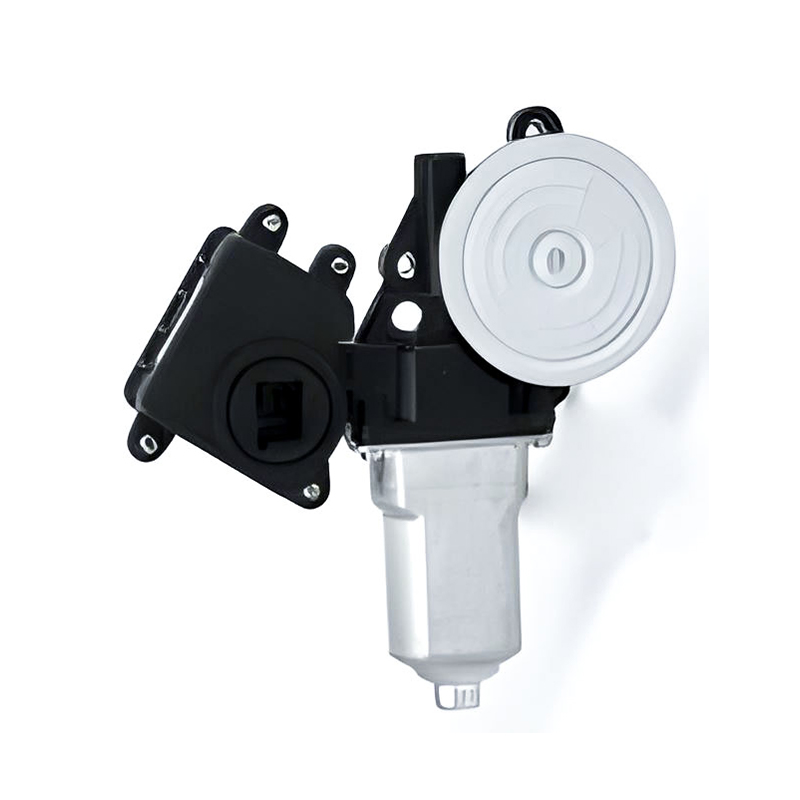A sealed wiper motor structure has become increasingly important in reducing water ingress risk, which can otherwise advance to premature failure and compromised function. This article explores the significance of sealing in wiper motor design, highlighting its impact on vehicle systems such as the window regulator in car doors and the electric linear actuator motor used in various automotive applications.

The wiper motor is exposed to harsh environmental conditions, including rain, snow, and dust. Without proper sealing, moisture can easily penetrate the motor housing, causing corrosion and electrical shorts. This is where a sealed wiper motor structure makes a difference. By carefully engineering the motor housing to prevent water and contaminants from entering, manufacturers enhance the motor's lifespan and ensure consistent performance. This advancement benefits related systems, including the window regulator in car doors, which relies on reliable motors to maintain smooth operation of power windows.
A well-sealed wiper motor prevents water ingress through multiple design features. These include rubber gaskets, tightly fitted covers, and durable sealing compounds. Such protective measures are essential because the wiper motor's role is safety-critical, clearing the windshield for ideal driver visibility. If water were to infiltrate the motor, it might fail during adverse weather, posing risks. The electric linear actuator motor, often found in power seats and other automotive adjustment systems, also benefits from similar sealing techniques to resist environmental damage.
In many modern vehicles, the window regulator in car doors uses electric linear actuator motors to provide smooth and precise window movement. These motors, like wiper motors, operate in challenging conditions where exposure to water and dirt is common. A leak-proof design helps maintain motor functionality, reducing maintenance costs and vehicle downtime. By understanding the importance of sealing in wiper motors, automotive engineers apply similar principles to electric linear actuator motors across various systems.
Water ingress can cause oxidation of internal motor components, which advances to friction, wear, and eventual failure. For the wiper motor, this translates into sluggish or erratic wiper blade movements, diminishing safety. Similarly, electric linear actuator motors that control window regulators in car doors can malfunction if water penetrates their housing, resulting in windows that stick or fail to operate. Sealing these motors protects internal wiring and delicate moving parts, ensuring that drivers can rely on their vehicle's systems regardless of weather.
A sealed wiper motor structure not only safeguards against water but also improves resistance to dust and other particles. This is particularly important in off-road or dusty environments where contamination can hinder motor operation. The window regulator in car systems and electric linear actuator motors require clean internal conditions to function efficiently. By adopting sealing strategies, the automotive industry reduces the frequency of repairs and extends the usable life of these components.
Beyond durability, sealing the wiper motor can contribute to quieter operation. Water trapped inside a motor can cause irregular noises due to corrosion or component degradation. A sealed design helps maintain motor integrity, which in turn supports smoother and quieter function. Likewise, electric linear actuator motors in door window regulators benefit from sealed housings to less mechanical noise, enhancing the vehicle's interior comfort.
In addition to the protective design, manufacturing processes play a role in achieving effective sealing. Precise assembly and the use of quality sealing materials ensure that each motor meets the required standards. Testing under simulated environmental conditions verifies that the wiper motor and electric linear actuator motor can resist water ingress over extended periods. This quality control supports the reliability of the window regulator in car doors and other critical automotive functions.
The trend toward electrification and automation in vehicles increases the importance of robust motor designs. As more components rely on electric linear actuator motors for adjustment and movement, the lessons learned from sealed wiper motor structures apply broadly. Ensuring that motors operate reliably in wet and dirty environments is essential for the future of automotive safety and convenience.
In summary, a sealed wiper motor structure plays a key role in reducing the risk of water ingress, which protects the motor from damage and maintains its performance. This design consideration is critical not only for the wiper system but also offers valuable insight for other automotive applications like the window regulator in car doors, where electric linear actuator motors are widely used. By prioritizing sealing and protection against environmental factors, automotive manufacturers contribute to safer, more reliable vehicles that perform well under diverse conditions.
Your email address will not be published. Required field are marked*